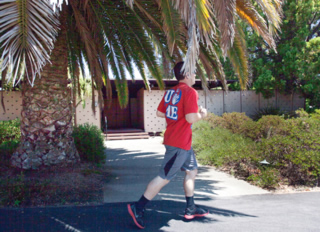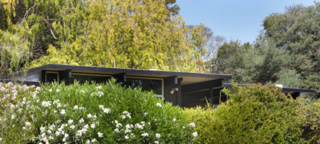Intellectual Paradise - Page 2
 |
|
|
There is one disadvantage to living at Stanford, though it affects the children more than their parents. University rules say the homes can be owned only by faculty, or staff, or their widows and widowers—but not other members of the family.
 |
|
|
“We can't leave the house to our kids,” says Lawrence Friedman, a professor of law and mystery novelist. “They would like it,” he says of his two daughters. “It's the house where they grew up.”
Unlike other Eichler neighborhoods, the 100 or so Eichlers of Stanford do not form a single enclave, but are scattered amidst other homes of the period.
Laura Jones, an archeologist (and former Palo Alto Eichler owner) who serves as Stanford's director of heritage services, thinks that's a good thing.
“In most Eichler neighborhoods, most houses are Eichlers,” she says. “Here, you see other aesthetics from the era side by side. You get a mixed version of what California was like in the mid-century. You get that more eclectic view. ‘This is what 1963 is like.' I find that interesting.”
But it's not just 1963. Stanford's collection of Eichlers tracks the developer's career, from 1951, shortly after he started building, to 1972, two years before he died.
Where else can you go to see woodsy early Anshen and Allen designs a few blocks from late, elegant Claude Oakland houses?
Stanford also has some of Eichler's most unique homes, including a semi-circular residence designed by Frank Lloyd Wright acolyte Aaron Green (planned originally for an Eichler subdivision but was never built).
The campus also has an Eichler designed, not by any of the builder's standard architects, but by John Brooks Boyd, an architect who frequently worked with Eichler to customize Anshen and Allen or Jones & Emmons designs for special clients.
 |
 |
|
|
One unusual Eichler on campus, built in 1951 and designed by Anshen and Allen, seems very much like a custom home in its plan and detailing, which includes a sleek, mahogany-paneled cabinet between living area and hallway.
It's a wonderful house, combining Arts & Crafts rusticity with mid-century minimalism, ideally sited to bring in light while keeping things cool. And it's intact.
“The distinctive features of this house make good sense to me,” says Tal Glezer, the banjo player and philosophy graduate student (his paper ‘Aristotle on Hypothetical Arguments and the Completeness of the Syllogistic' was published in the journal Ancient Philosophy) who rents it. “In this ideal climate we have here in Northern California, a house has no practical justification for having walls and roofs other than for privacy.
“This is about as little as you can have by way of a house without actually living outside.”
Unique in a different way is a rare two-story Eichler. It's based on the famous ‘Life house,' a 1958 home built in the San Mateo Highlands to the design of Pietro Belluschi, and so named because of the coverage it received in Life magazine.
Law professor John McDonough liked the house so much, he asked Eichler to build one for him on Stanford. “Eichler had done it once, he could do it again,” McDonough, who is not the current owner, told the Eichler Network in 2001, “and now he could even have a show place on the campus.”
Still, most Eichlers on campus are standard models pulled from the various tracts, or are ‘customized' relatively mildly.




